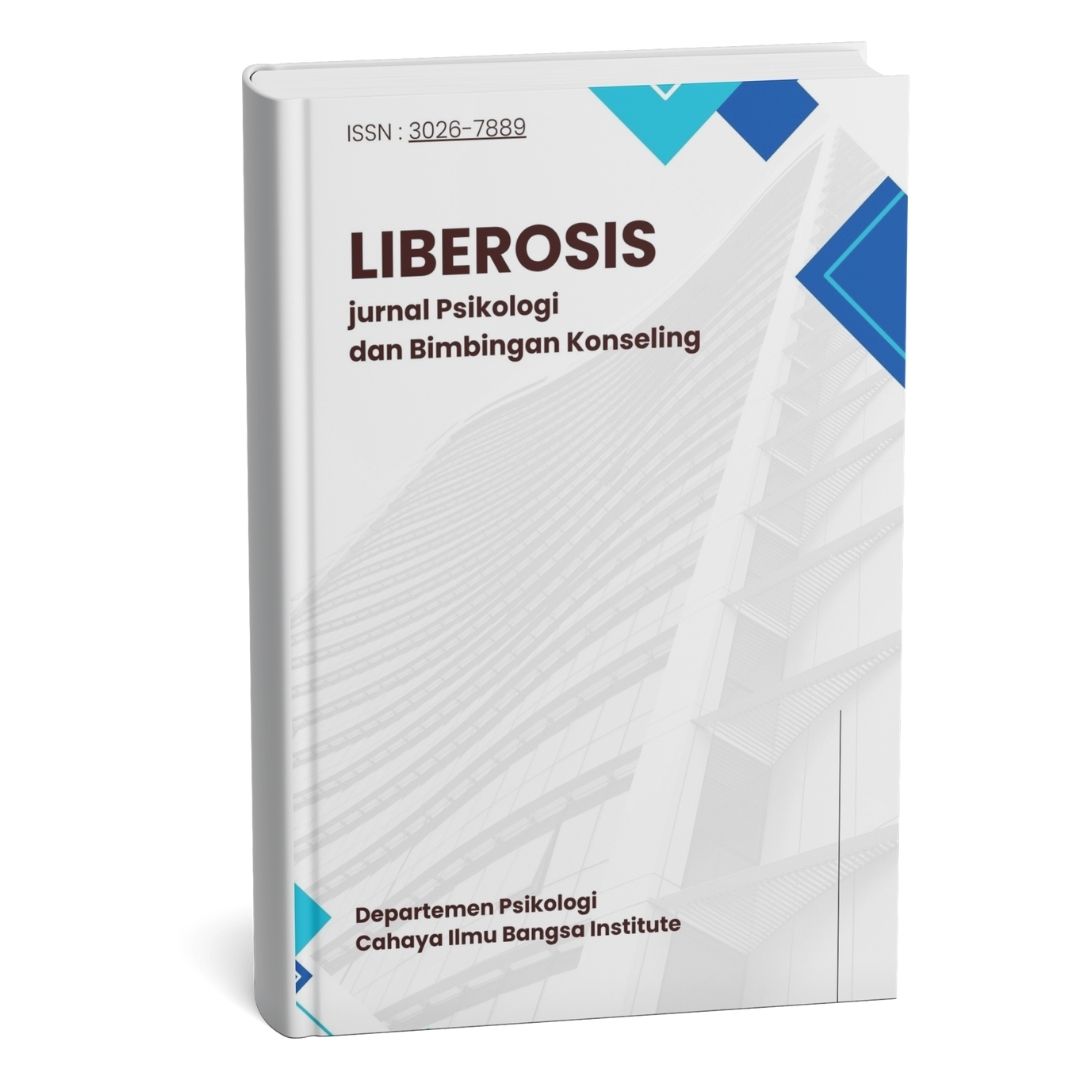HUBUNGAN ANTARA BUDAYA ORGANISASI DENGAN KETERIKATAN KERJA PADA KARYAWAN GENTLE EMPLOYEE (G.E) DI CLUB MED BINTAN
Main Article Content
Abstract
In the competitive hospitality industry, organizational culture plays a strategic role in fostering employees’ sense of belonging and enhancing their work engagement. This study aims to examine the relationship between organizational culture and the level of work engagement among permanent Gentle Employees (G.E) at Club Med Bintan. A quantitative approach was employed, utilizing a saturated sampling technique with 117 permanent employees as participants. Data were collected using two instruments: an organizational culture scale and a work engagement scale. The data were analyzed using the Pearson Product-Moment correlation technique, which yielded a correlation coefficient (r) of 0.776 with a significance level of 0.000
(p < 0.05). These findings indicate a positive and significant relationship between organizational culture and the work engagement of G.E employees at Club Med Bintan. In other words, the stronger the implementation of organizational culture, the higher level of work engagement among employees at the Club Med Bintan resort.
Article Details
Section
How to Cite
References
Aidina, N. R., & Prihatsanti, U. (2017). Hubungan antara Kepercayaan terhadap Pemimpin dengan Keterikatan Kerja pada Karyawan PT Telkom Witel Semarang. Jurnal Empati, 6(4),
137–142. https://doi.org/10.14710/empati.2017.20002
Andriani, R., & Kristiutami, Y. P. (2018). Implementasi Budaya Pelayanan pada Industri Perhotelan Hubungannya dengan Peningkatan Kinerja Human Capital. Jurnal Ecodemica, 2(2), 306–313. https://doi.org/10.31294/jeco.v2i2.4501
Babu, A. L., Mohan, A. C., & Manivannan, S. K. (2020). Impact of Work Culture on Employee Engagement. TEST Engineering & Management, 83, 9758–9764.
Bakker, A. B., & Leiter, M. P. (2010). Work Engagement: A Handbook of Essential Theory and Research. Psychology Press.
Creswell, J. W., & Creswell, J. D. (2023). Research Design: Qualitative, Quantitative, and
Mixed Methods Approaches (6th ed.). SAGE Publications,Inc.
https://medium.com/@arifwicaksanaa/pengertian-use-case-a7e576e1b6bf
Deal, T. E., & Kennedy, A. A. (1982). Corporate Cultures: The Rites and Rituals of Corporate Life. Business Horizons, 26(2), 82–85. https://doi.org/10.1016/0007-6813(83)90092-7.
Denison, D. R., & Neale, W. S. (2019). Denison Organizational Culture Survey. Denison Consulting, LLC. https://doi.org/10.1037/t64206-000
Domiyandra, R., & Rivai, H. A. (2019). Pengaruh Kepemimpinan Etis (Ethical Leadership), Budaya Organisasi, dan Penghargaan (Rewards) terhadap Keterikatan Kerja (Work Engagement) Account Representative (AR) pada KPP Pratama di Lingkungan Kanwil DJP
“X.” Jurnal STIE Semarang, 11(1), 102–118. https://doi.org/10.33747/stiesmg.v11i1.349
Ghozali, I. (2021). Aplikasi Analisis Multivariate dengan Program IBM SPSS 26 (10th ed.). Badan Penerbit Universitas Diponegoro.
Guilford, J. P. (1942). Fundamental Statistics in Psychology and Education (1 ed.). McGraw-Hill Book Company.
Hofstede, G. (1993). Cultural Constraints in Management Theories. Academy of Management Executive, 7(1), 81–94. https://doi.org/http://dx.doi.org/10.5465/ame.1993.9409142061
Iswati, N. P., & Mulyana, O. P. (2021). Hubungan antara Kualitas Kehidupan Kerja dengan Keterikatan Kerja pada Karyawan PT. X. Character: Jurnal Penelitian Psikologi, 8(8), 116– 128. https://doi.org/10.26740/cjpp.v8i8.41684
Jannah, M. (2018). Metodologi Penelitian Kuantitatif untuk Psikologi. Unesa University Press.
Laia, I. H., & Maria, A. D. (2024). Analisis Strategi Bersaing Hotel Haris dalam Meningkatkan Produktivitas Industri Perhotelan di Kota Semarang. JIMEA: Jurnal Ilmiah Manajemen, Ekonomi, & Akuntansi, 8(2), 2186–2198. https://doi.org/10.31955/mea.v8i2.4277
Lockwood, N. R. (2007). Leveraging Employee Engagement for Competitive Advantage: HR’s Strategic Role (SHRM Research Quarterly Report). Society for Human Resource Management.
Macey, W. H., & Schneider, B. (2008). The Meaning of Employee Engagement. Industrial and Organizational Psychology, 1(1), 3–30. https://doi.org/10.1111/j.1754-9434.2007.0002.x
Maulidiyah, N. N., Lestari, A., Choerudin, A., Pardede, J. A., Gafar, M., Amaliyah, A, M. U.,
Muliyati, Hadawiah, Maharani, A., Nursifa, Arifannisa, Irawan, B., & Trinanda, O. (2022). Perilaku Organisasi. In Perilaku Organisasi (1 ed.). PT. GLOBAL EKSEKUTIF TEKNOLOGI. https://doi.org/10.52931/t4b6/2022
Prahara, S. A., & Hidayat, S. (2019). Budaya Organisasi dengan Work Engagement pada Karyawan. Jurnal RAP (Riset Aktual Psikologi Universitas Negeri Padang), 10(2), 232–244. https://doi.org/10.24036/rapun.v10i2.106977
Puspitasari, R. D., & Budiana, M. S. (2022). Hubungan Antara Budaya Organisasi Dengan Work Engagement Pada Karyawan PT. Mitra Megah Bangunan Abadi. Character: Jurnal Penelitian Psikologi, 9(6), 1–10. https://doi.org/10.26740/cjpp.v9i6.46999
Putriamadhana, A. M., & Mulyana, O. P. (2023). Hubungan Budaya Organisasi dan Keterikatan Kerja Pada Karyawan. Character : Jurnal Penelitian Psikologi, 10(02), 116–130. https://doi.org/10.26740/cjpp.v10i2.53389
Rihardi, E. L. (2021). Pengembangan Manajemen Sumber Daya Manusia sebagai Sebuah Keunggulan Kompetitif pada Industri Pariwisata dan Perhotelan. Komitmen: Jurnal Ilmiah Manajemen, 2(1), 10–20. https://doi.org/10.15575/jim.v2i1.12474
Schaufeli, W. B., & Bakker, A. B. (2004). Job Demands, Job Resources, and Their Relationship with Burnout and Engagement: A Multi-Sample Study. Journal of Organizational Behavior, 25(3), 293–315. https://doi.org/10.1002/job.248
Sonnentag, S., Eck, K., Fritz, C., & Kühnel, J. (2020). Morning Reattachment to Work and Work Engagement During the Day: A Look at Day-Level Mediators. Journal of Management, 46(8),
1408–1435. https://doi.org/10.1177/0149206319829823
Sugiyono. (2023). Metode Penelitian Kuantitatif, Kualitatif, dan R&D. Alfabeta.
Tamimi, M., Soetjipto, B. E., Sopiah, S., & Kurniawan, D. T. (2022). Budaya Organisasi dan Kinerja Karyawan : Systematic Literature Review. Husnayain Business Review, 2(2), 11–21. https://doi.org/10.54099/hbr.v2i2.100
